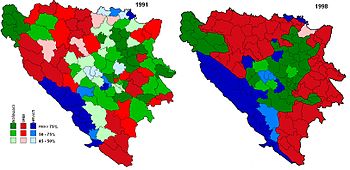Greater Croatia
[citation needed] The foundations of the concept of Greater Croatia are laid in late 17th and early 18th century works of Pavao Ritter Vitezović.
In 1832, he published his Dissertation to the joint Hungarian-Croatian Diet, in which he envisioned a “Great Illyria” consisting of all the South Slav provinces of the Habsburg Empire.
Likewise, the influential Bishop Josip Juraj Strossmayer, although a supporter of the Habsburg monarchy, nonetheless advocated merging the Kingdom of Dalmatia with Croatia.
Unlike Strossmayer and the proponents of the Illyrian movement, HSP advocated a united Croatia that stood independently of a Pan-Slavic umbrella state.
Starčević and Kvaternik's ideologies gradually gained popularity during the interwar period as tensions grew in the Kingdom of Yugoslavia between the Croatian and the more influential Serbian political leaders.
Amid rising ethnic tensions between Croats and Serbs in the 1930s, an autonomous state within Yugoslavia, called the Banovina of Croatia was peacefully negotiated in the Yugoslav parliament via the Cvetković–Maček Agreement of 1939.
The Ustaša, an ultranationalist and fascist[16] movement founded in 1929 supported a Greater Croatia that would extend to the River Drina and to the edge of Belgrade.
The Greater Croatian ideology, combined with Nazi racial theory, culminated in the genocide of Serbs, the Holocaust and the Porajmos in the NDH carried out by Ustaše.
[30] Croatian President Franjo Tuđman was criticised for trying to expand the borders of Croatia, mostly by annexing Herzegovina and parts of Bosnia with Croat majorities.
[35][36] Most commonly encompassed regions include:[1][37] By Slavic territories, Vitezović meant the Illyria of his dreams (Greater Croatia) which, in its boldest manifestation, would have incorporated Hungary itself.




Territorial ethnic changes before and after the Bosnian War
